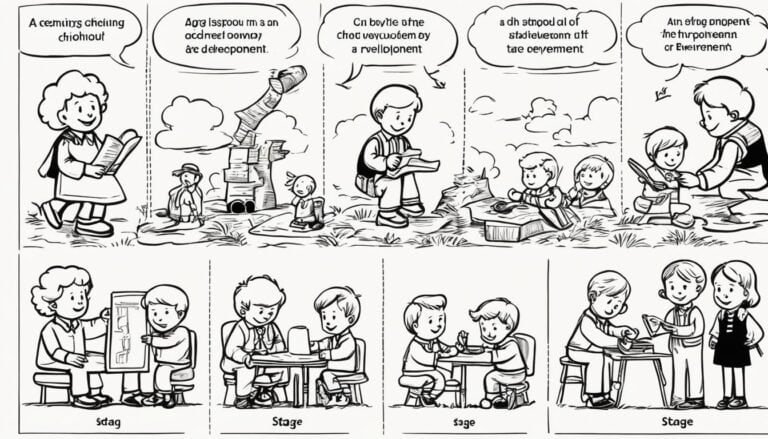Why Does Intercultural Communication Have the Potential for Increased Noise?
Imagine you are at a bustling international airport, surrounded by people from different corners of the world. Amidst the cacophony of languages, you overhear a conversation between two individuals who are clearly struggling to understand each other. Their frustration is palpable as they resort to hand gestures and broken English in an attempt to bridge the gap.
This scene serves as a metaphor for the challenges of intercultural communication, where the potential for increased noise is ever-present. But why does this happen? What factors contribute to the difficulty of effectively exchanging ideas and information across cultures?
In this discussion, we will explore the language barriers, cultural differences, non-verbal cues, misunderstandings, and lack of cultural awareness that can impede the clarity and effectiveness of intercultural communication.
Key Takeaways
- Language barriers can create noise in intercultural communication, leading to misunderstandings, confusion, and frustration.
- Cultural differences, including communication styles and norms, contribute to the potential for increased noise in intercultural communication.
- Non-verbal cues play a crucial role in intercultural communication and understanding them helps bridge the gap caused by language barriers.
- Lack of cultural awareness can hinder effective intercultural communication, as it may lead to offensive or inappropriate behaviors. Culturally sensitive approaches foster mutual understanding and cooperation.
Language Barriers
Language barriers can significantly hinder effective intercultural communication, making it crucial for individuals to find ways to overcome them. Cross-cultural interaction often involves people from different linguistic backgrounds, which can lead to communication challenges. The inability to understand each other's language can create misunderstandings, confusion, and even frustration.
It becomes essential to find alternative means of communication, such as using interpreters, learning basic phrases in the other person's language, or utilizing visual aids. Additionally, non-verbal communication becomes vital in bridging the language gap. Gestures, facial expressions, and body language can help convey meaning and intentions. However, it's important to note that even with these methods, some nuances and subtleties may still be lost in translation.
Therefore, it's crucial for individuals engaging in cross-cultural interactions to be patient, understanding, and open-minded to ensure effective communication despite language barriers.
Cultural Differences
Navigating cultural differences is a complex and nuanced process that requires a deep understanding of societal norms, values, and traditions. Cultural norms encompass the unwritten rules that govern behavior within a specific culture, while communication styles refer to the preferred ways of exchanging information and ideas. These differences can create significant challenges in intercultural communication, leading to increased noise and misunderstandings. To illustrate this, consider the following table:
| Cultural Norms | Communication Styles |
|---|---|
| Individualism | Direct and explicit |
| Collectivism | Indirect and implicit |
| High context | Non-verbal cues |
| Low context | Verbal expression |
| Hierarchical | Formal and respectful |
| Egalitarian | Informal and relaxed |
Understanding and adapting to these cultural differences is vital in overcoming communication barriers. By recognizing and respecting cultural norms and adjusting communication styles accordingly, individuals can enhance their intercultural communication skills and reduce the potential for increased noise.
Non-Verbal Cues
Non-verbal cues play a crucial role in intercultural communication, providing additional layers of meaning and context beyond spoken language. In various cultures, body language and facial expressions are used to convey emotions, attitudes, and intentions, often without the need for verbal communication. However, the interpretation of non-verbal cues can vary significantly across different cultures, leading to potential misunderstandings and increased noise in intercultural interactions.
Body language, such as gestures, posture, and physical proximity, can communicate different messages depending on cultural norms. For example, while direct eye contact is seen as a sign of respect and attentiveness in Western cultures, it may be interpreted as a sign of disrespect or aggression in certain Asian cultures. Similarly, facial expressions, including smiles, frowns, and nods, can have different meanings and interpretations across cultures.
To navigate this potential noise in intercultural communication, it's essential to develop cultural awareness and sensitivity. Recognizing and understanding the non-verbal cues used in different cultures can help bridge the gap and foster effective communication.
Misunderstandings
Misunderstandings in intercultural communication can arise from differences in cultural norms and interpretations of non-verbal cues. These misunderstandings can lead to communication breakdowns and hinder effective cross-cultural interactions. Here are three common reasons why misunderstandings occur:
- Cultural Norms: Cultural norms vary significantly across different societies. What may be considered appropriate or polite in one culture may be seen as rude or offensive in another. These cultural differences can create misunderstandings when individuals unknowingly violate the norms of another culture.
- Interpretation Challenges: Non-verbal cues, such as body language, facial expressions, and gestures, play a crucial role in communication. However, these cues can be interpreted differently in different cultures. Misinterpretation of non-verbal cues can lead to misunderstandings and miscommunication.
- Language Barrier: Language is a fundamental aspect of communication. When individuals from different cultures speak different languages or have limited language proficiency, misunderstandings are more likely to occur. The use of idioms, slang, or even pronunciation differences can further complicate communication.
To overcome these challenges, individuals must develop cultural sensitivity, actively listen, and seek clarification when necessary.
Lack of Cultural Awareness
Cultural misunderstandings can often be attributed to a lack of cultural awareness, which hinders effective intercultural communication and creates barriers to cross-cultural understanding and cooperation. In today's globalized world, where cross-cultural interactions are becoming increasingly common, it is crucial to develop cultural sensitivity to navigate these interactions successfully. Cultural sensitivity refers to the ability to understand, respect, and adapt to cultural differences. It involves being aware of cultural norms, values, and beliefs, as well as understanding the impact they have on communication styles and behaviors. Without cultural awareness, individuals may unknowingly engage in behaviors that are considered offensive or inappropriate in another culture, leading to misunderstandings and strained relationships. By developing cultural sensitivity, individuals can bridge the gap between cultures, fostering mutual understanding, and enhancing cooperation.
| Lack of Cultural Awareness | Importance of Cultural Sensitivity |
|---|---|
| Hinders effective intercultural communication | Facilitates understanding and cooperation |
| Creates barriers to cross-cultural understanding | Helps avoid misunderstandings and conflicts |
| Limits the ability to adapt to different cultural norms | Promotes inclusivity and respect for diversity |
Conclusion
In conclusion, intercultural communication can be a complex and challenging process due to various factors. Language barriers, cultural differences, non-verbal cues, misunderstandings, and lack of cultural awareness all contribute to the potential for increased noise in cross-cultural interactions.
It's crucial to approach intercultural communication with sensitivity, open-mindedness, and a willingness to learn and adapt. By understanding and respecting these differences, we can bridge the gap and foster effective communication across cultures, ultimately leading to greater understanding and collaboration.
So, let's break down the barriers and build bridges of communication in our diverse world.





